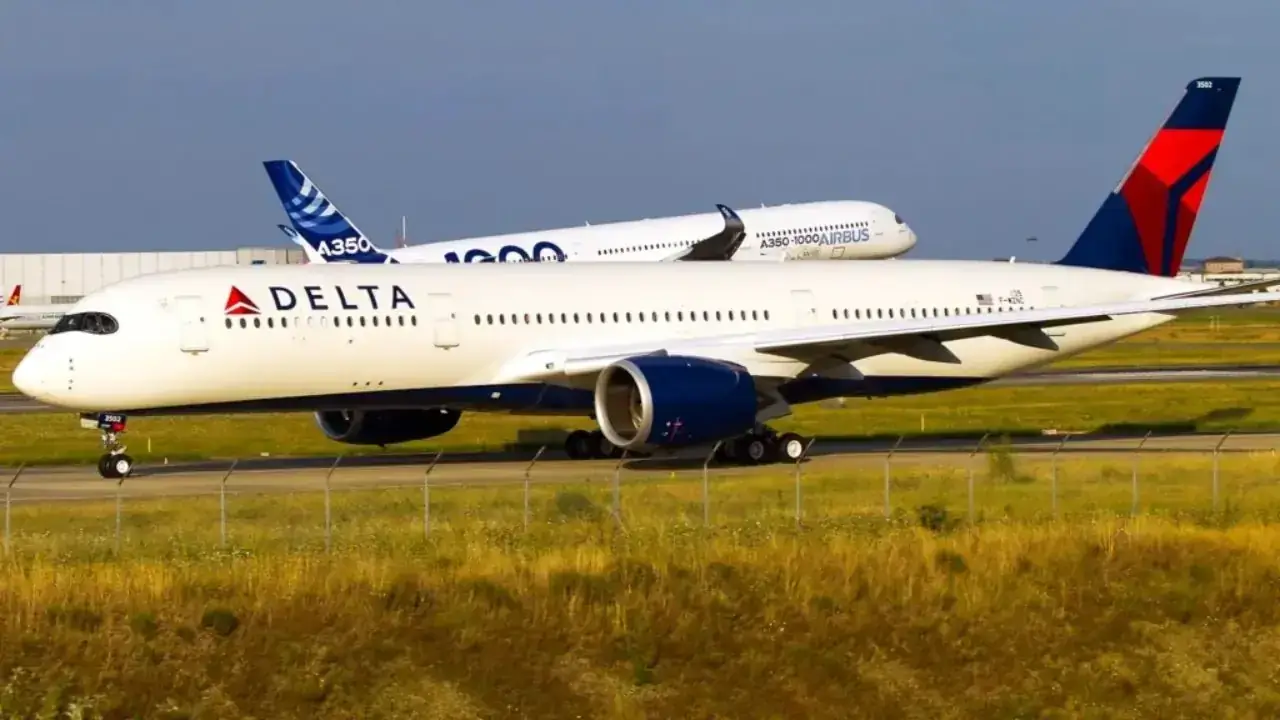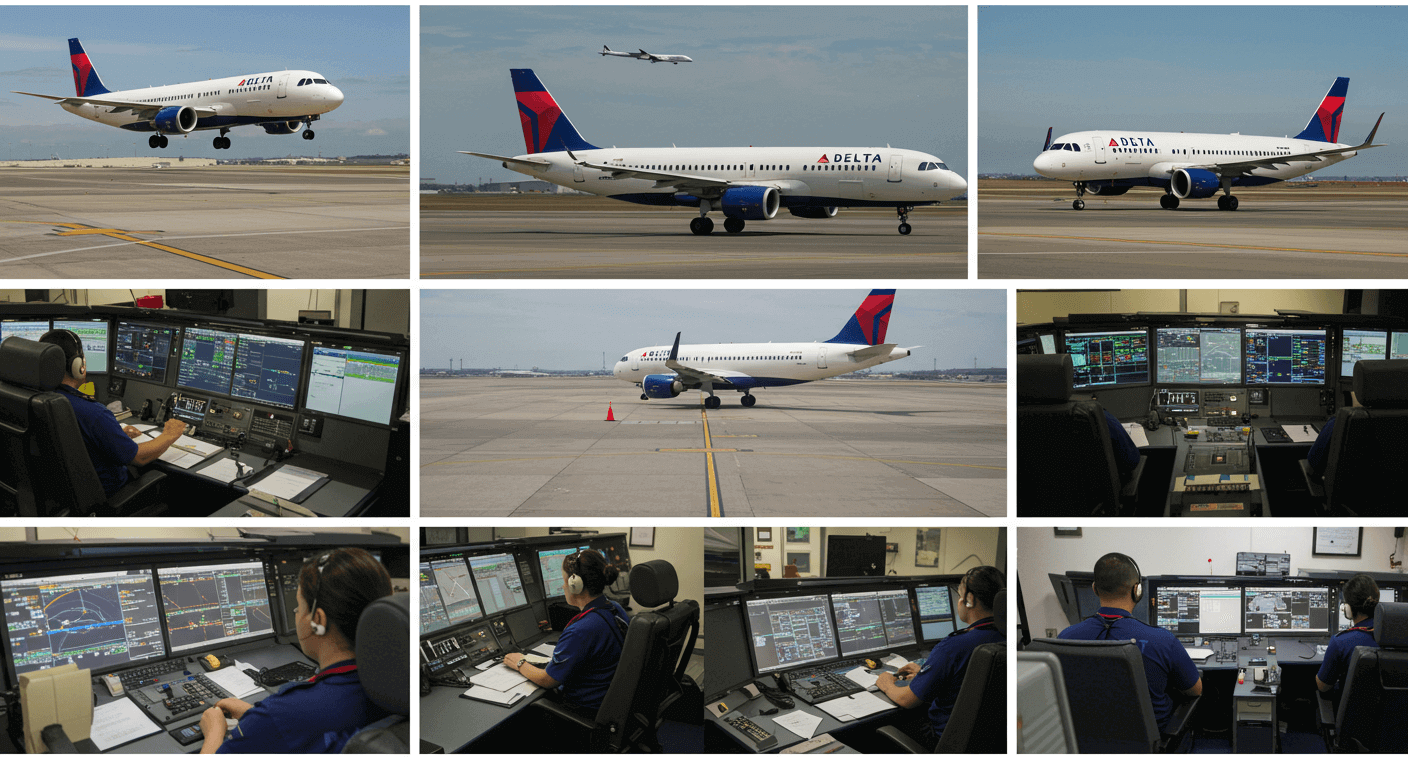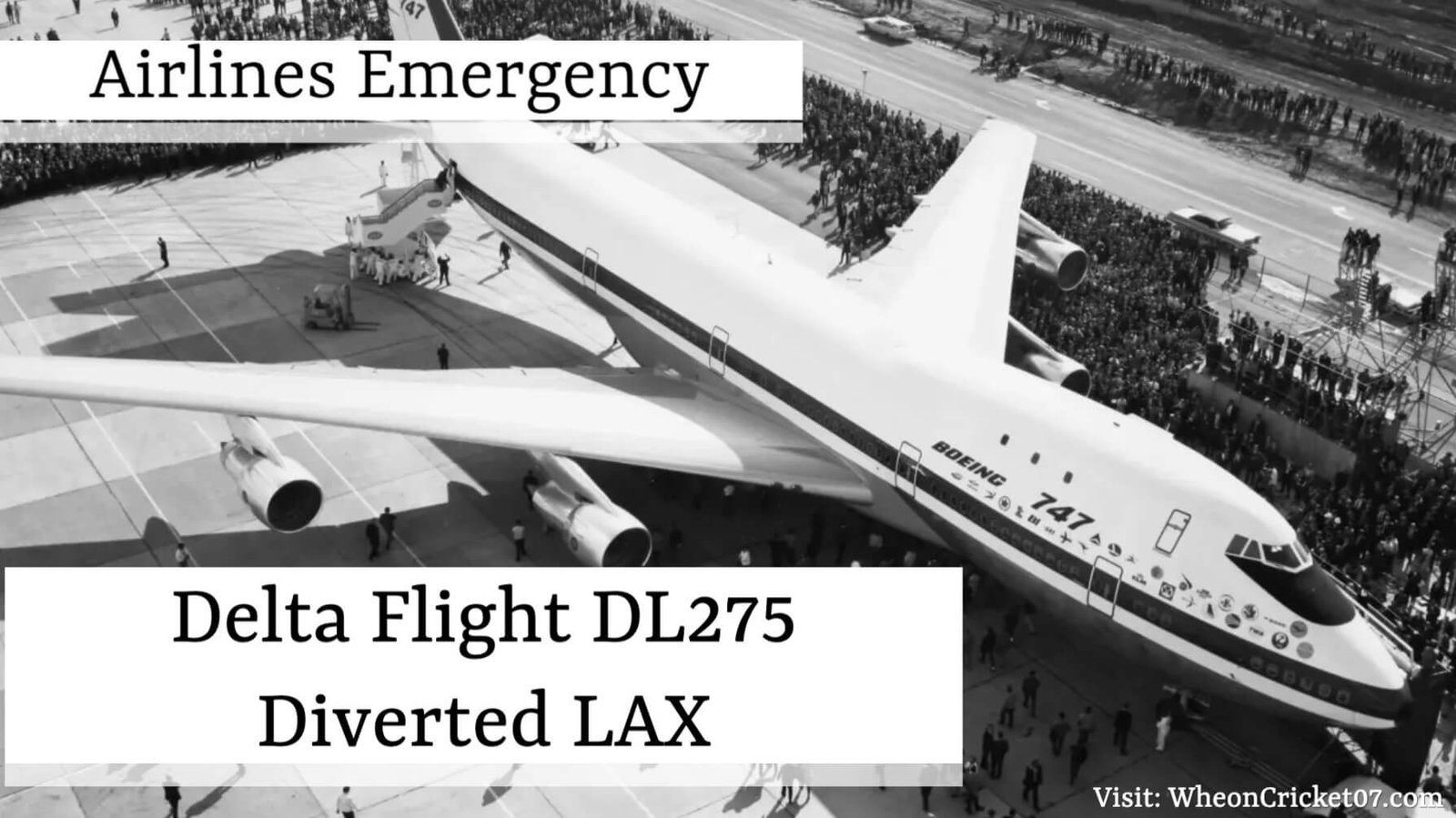Introduction
Imagine boarding a long-haul flight from Detroit to Tokyo—only to have it diverted to Los Angeles mid-air. That’s exactly what happened with Delta Flight DL275 on May 28, 2025. The aircraft, an Airbus A350, was forced to change course due to a malfunction in its engine anti-ice system, prompting a high-priority diversion to LAX. The good news? The plane landed safely, and no injuries were reported. But the whole event raises important questions about aviation safety, in-flight protocols, and passenger rights.
In this guide, we’ll break down the event, explain how diversions work, explore the technical and operational side, and walk you through everything travelers—and aviation enthusiasts—need to understand about these complex situations.
Overview of Delta Flight DL275 Incident

Scheduled Route and Aircraft Details
-
Flight DL275 was operating from Detroit Metropolitan Airport (DTW) to Tokyo Haneda (HND).
-
The jet: an Airbus A350‑900, registration N508DN, powered by Rolls‑Royce Trent XWB engines.
When Things Went Wrong
At 38,000 feet, over the North Pacific, the crew detected an anti-ice system anomaly in one of the engines—critical during trans-oceanic flights. Rather than risk continuing, the flight was rerouted to Los Angeles International Airport (LAX), a top-tier diversion hub.
The plane landed safely about 5.5 hours after the diversion was initiated, with the remaining leg to Tokyo canceled. All passengers were rebooked on alternate flights.
Why Safety Comes First—Anti-Ice Systems Explained
What Is the Engine Anti-Ice System?
At high altitude, moisture and ice can form on engine fan blades and components. The anti-ice system uses bleed air heated to prevent ice accumulation. If it fails, engine performance and safety are compromised. That’s what happened aboard DL275.
Why the Pacific Makes Diversions Riskier
Over remote oceanic zones like the North Pacific, diverting to land is essential. With fewer airports within range, the crew followed protocol—diverting to the nearest equipped airport. LAX served as a logical choice.
The Life-Saving Decision to Divert

Immediate Pilot Actions
After the anomaly was detected, the flight crew:
-
Communicated with Delta Operations Control
-
Decided to head to LAX
-
Updated passengers with concise announcements
-
Declared an “operational diversion” for safety
Choosing LAX as the Diversion Airport
LAX is equipped with:
-
24/7 A350 maintenance and Rolls‑Royce engine support
-
Multiple passenger service facilities
-
Comprehensive logistics for rebooking disrupted travelers
All these factors made it an ideal diversion destination.
What Passengers Experienced During DL275
Cabin Atmosphere
Passengers reported surprise and confusion when the pilot announced the diversion. Some documented the event on their phones; many appreciated the crew’s calm demeanor—event interpretation varied, but anxiety was kept in check.
Boarding and Rebooking Process
Once on the ground at LAX, passengers disembarked. Delta’s ground staff quickly facilitated:
-
Rebooking to Tokyo via alternate routes
-
Accommodation or meal vouchers if needed
-
Custodial assistance and communication via app updates
Costs and Broader Impacts
Operational Costs of the Diversion
Aviation analysts estimate the cost for DL275’s diversion:
-
~$332,000 in fuel, maintenance, and crew overtime expenses
-
Broader impact likely reached up to $2.3 million, including operational disruption and ripple effects.
Network Effects
-
Delayed or rescheduled flights at LAX
-
Crew scheduling impacts
-
Increased shifts for technical teams
-
It also affects travelers connecting through LAX, rippling across networks
How Airlines Handle Flight Diversions
Crew Training and Protocols
Delta pilots are trained for ETOPS (Extended-range Twin-engine Aircraft Operations), meaning they can divert safely over long distances. Decision-making tools and checklists like FORDEC (Facts, Options, Risks, Decision, Execution, Check) guide pilots through these scenarios.
Airline Ground Support
Once safely on the ground, airlines coordinate:
-
Rebooking
-
Accommodations
-
Meals
-
Crew rest
-
Technical repair or replacement of aircraft routing
Typical Reasons for Flight Diversion
-
Mechanical or system failures (like anti-ice systems)
-
Weather conditions
-
Medical emergencies
-
Security threats
-
Passenger disturbances
DL275’s cause was technical, as the crew acted when detecting the engine issue.
Benefits of Understanding Diversions
Traveler Preparedness
Knowing what to expect during diversions can calm nerves. Understanding passenger rights, travel insurance options, and airline policies helps.
Industry Insight
Frequent fliers or aviation professionals can gain key insights into operational reliability, aircraft systems, and airline preparedness.
How to Handle a Flight Diversion Like a Pro

Immediate Steps
-
Stay calm and listen to the crew.
-
Keep essential documents and medications in your carry-on.
-
Monitor the airline app and confirm next steps.
During Ground Delay
-
Ask about lodging or meals if overnighted.
-
Request rebooking or alternate routing help.
-
Keep a record (boarding pass, receipts) in case of compensation claims or insurance.
Afterward
-
Store all communications and receipts.
-
Reach out to airline customer service if issues arise.
Real-Life Examples Beyond DL275
Delta Incident Over the Latin Atlantic
In July 2025, a flight from Madrid to New York diverted to the Azores following engine issues. All 282 passengers were accommodated and later flown to JFK. Delta extended compensation to affected customers.
Diversion for Passenger Emergencies
Delta Connection Flight 3612 was diverted to Cedar Rapids after an unruly passenger tried to open an exit door mid-air. The individual was restrained, and the flight landed safely.
These examples show how varied causes of diversion can be—technical, medical, behavioral.
Technical Systems in Modern Aircraft
Airbus A350 & Rolls‑Royce Trent XWB Engines
The A350 relies on advanced digital monitoring, but hardware issues (like anti-ice malfunctions) will still prompt diversions.
The Role of Predictive Maintenance
Emerging AI-based systems analyze sensor data in real-time, potentially detecting malfunctions hours before flight—even allowing operators to prevent diversions altogether.
Pros and Cons of Long-haul Diversions
Pros
-
Ensures passenger safety
-
Avoids catastrophic failure at the destination
-
Allows ground teams to inspect aircraft
Cons
-
Travel disruptions and delays
-
Significant operational costs
-
Passenger inconvenience
Airline Accountability and Passenger Rights
What Airlines Are Obligated To Provide
-
Clear communication during diversion
-
Rebooking or refund options
-
Hotel and meal vouchers when an overnight stay is necessary
-
Updates on progress and options
When Compensation May Apply
-
If the airline is at fault (e.g., mechanical issues without warning)
-
Local regulations (e.g, EU261, U.S. DOT) may offer recourse or refunds/refeeds
Future Trends: Will Predictive AI Reduce Diversions?
AI Diagnostics
Companies are building tools to analyze real-time engine data and predict failures—allowing airlines to ground flights before departure rather than divert mid-air.
Smarter Crew Tools
AI could assist pilots by recommending diversion airports automatically based on performance data, weather, and airport capabilities.
Summary Table—Key Facts of DL275 Diversion
| Detail | Information |
|---|---|
| Flight Number | Delta DL275 |
| Route | DTW → HND, diverted to LAX |
| Aircraft | Airbus A350‑900 (N508DN) |
| Altitude at Detection | ~38,000 ft over North Pacific |
| Cause of Diversion | Engine anti-ice system malfunction |
| Landing Airport | Los Angeles International Airport |
| Delay Duration | ~5.5 hours before landing, 18.5-hour grounding |
| Passenger Impact | Rebooked to Tokyo; no injuries |
| Estimated Operational Cost | $332,000 – $2.3M (fuel, repairs, rebooking) |
Conclusion
Delta Flight DL275’s diversion to LAX might have seemed alarming, but it reflected a well-handled aviation procedure. Safety was prioritized, passengers were supported, and the aircraft landed without incident. For travelers and enthusiasts alike, this case reinforces how modern aviation relies on safeguards and protocols designed for unpredictable situations.
Next time you hear “diverted,” know it’s not the end of the journey—it’s often the safest way to keep the journey going.
FAQs
Q1: Why was DL275 diverted to LAX instead of continuing to Tokyo?
Because the engine’s anti-ice system malfunctioned mid-flight. For over-ocean safety, diversion to a well-equipped airport (like LAX) was the safest option.
Q2: Were any passengers harmed during the diversion?
No—everyone landed safely. Delta reported no injuries.
Q3: How does diversion affect my itinerary?
Delta rebooked all passengers onto alternate flights to Tokyo. Airlines such as Delta also provide accommodations or assist if needed.
Q4: How common are diversions like this?
Diversions occur in roughly 1 in 500 long-haul flights, often due to weather or technical issues. Airlines aim to minimize delays while prioritizing safety.
Q5: Can these events be prevented?
With predictive maintenance and AI diagnostics, issues can potentially be flagged before take-off—preventing some diversions.
Q6: Will Delta compensate me for the diversion?
It depends on airline policy and local regulations. If Delta is responsible for delays or disruptions, compensation may be available.
